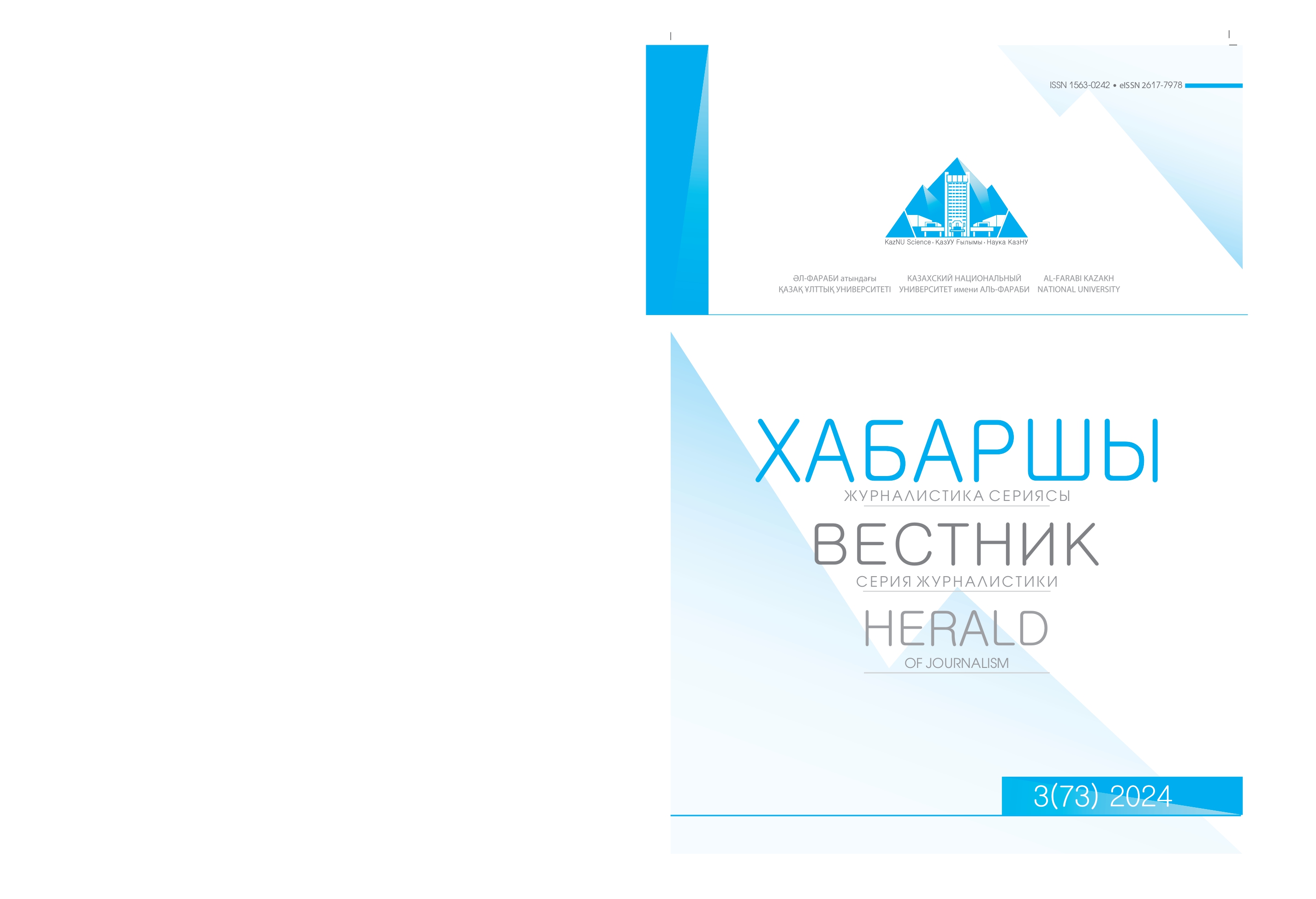How are conflicts covered in social media? The case study of Kazakhstan’s telegram channels «ORDA» and «Kazinform»
DOI:
https://doi.org/10.26577/HJ.2024.v73.i3.5Keywords:
conflict, social network, content, Telegram, media, messenger.Abstract
The study examined the role of Telegram channels as an independent tool in disseminating infor- mation and covering conflicting topics. An analysis of the content of certain Telegram channels ac- complished, in particular, independently and in the state. The scientific work is aimed at identifying the features of the content in the selected channels, the position that correspondents adhere to, language features and style.
The main idea of the article is to studying how the messenger covers conflict situations. The purpose of the study is to identify the specifics of information about conflicts on the Kazakh Telegram channels of the independent “ORDA” and the state-owned “Kazinform”.
With the increasing demand for social networks, this research becomes relevant and important to identify how much information on these channels affects public opinion and informs the audience. Tele- gram has become available in Kazakhstan since its first launch in 2017 and has gained trust among users. In order to analyze the coverage of conflicts on the social network using the example of these Tele- gram channels, a qualitative method was used. Thematic analysis used to identify repetitive formats,
frames, and language features.
The findings of the study concern the characteristics of Telegram channels as an independent media tool and their role in conflict coverage.
The results of the work distinguish the methods of covering and writing about conflicting topics. Analyzing content it was found that independent channels broadcast diverse points of view, while state- owned channels often avoided conflict-related topics and covered events from a positive perspective.
The study offers valuable information on approaches to writing and reporting on controversial top- ics, thereby providing practical value for the academic community and practicing journalists.
The results of the study are of practical importance for interested groups of people, in particular, for journalists, media experts, political scientists and social activists.




